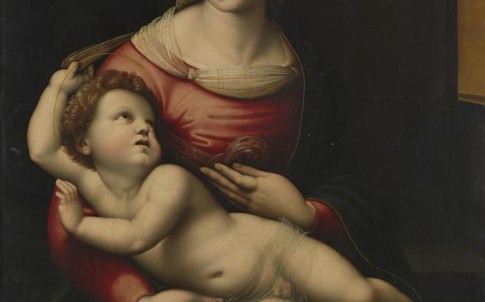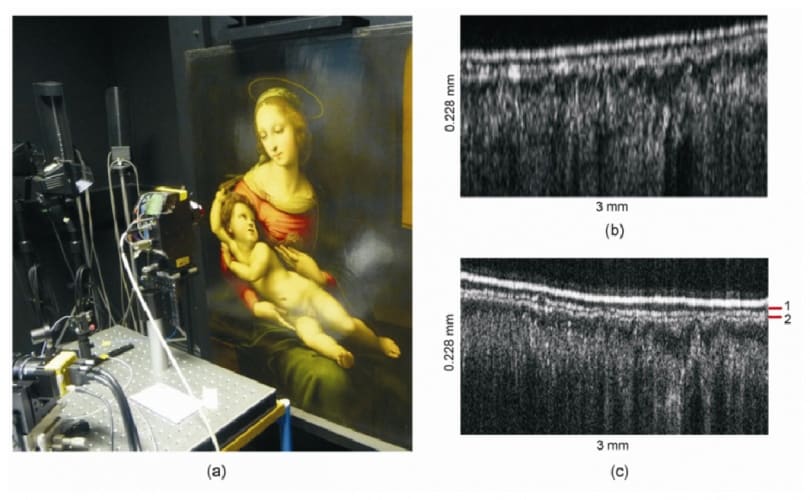When art experts restore or conserve paintings, they have to know what they’re getting into. Old Master paintings are usually varnished, often several times at various points through their history; although originally intended to protect the surface of the painting, the varnish can degrade, dulling the colours. An important stage in conservation is removing the old varnish, but to do this the conservators must understand the layers of material that make up the picture: how many coats of varnish, of what composition; and what the various layers of paint in the picture actually are. Generally, this is done by taking tiny samples from the picture — around a quarter of a millimetre across — and analysing them. Optical specialists at Nottingham Trent University have now worked with the National Gallery to upgrade a technique that can look below the surface of an Old Master without damaging it; it could also be used to study old documents, they say.

The group was looking at Optical Coherence Tomography (OCT), a medical technique already used by art historians but which until now has not been able to resolve the many fine layers of an Old Master. The technique works by splitting a beam of light, with one side scattered off the surface of the painting and the other sent to a reference mirror. Recombining both beams gives an indication of what frequencies of light were absorbed by the materials in the painting.

The team, led by Haida Liang of Notitngham Trent, used a newly-available wide-spectrum laser-like beam as a light source, and scanned a 16th-century copy of a Raphael painting from the National Gallery’s collection. This gave as much information as an invasive technique, the team reports in Optics Express.
“We are able to not only match the resolution but also to see some of the layer structures with better contrast,’ said Liang . ”That’s because OCT is particularly sensitive to changes in refractive index.”
The team is now working to combine long-wavelength light, which penetrates most deeply into the surface of the painting, with short wavelengths, which provide the best resolution.
“The next challenge is perhaps to be able to do that in one instrument, as well as to extract chemical information from different layers,” said Liang.




Swiss geoengineering start-up targets methane removal
No mention whatsoever about the effect of increased methane levels/iron chloride in the ocean on the pH and chemical properties of the ocean - are we...